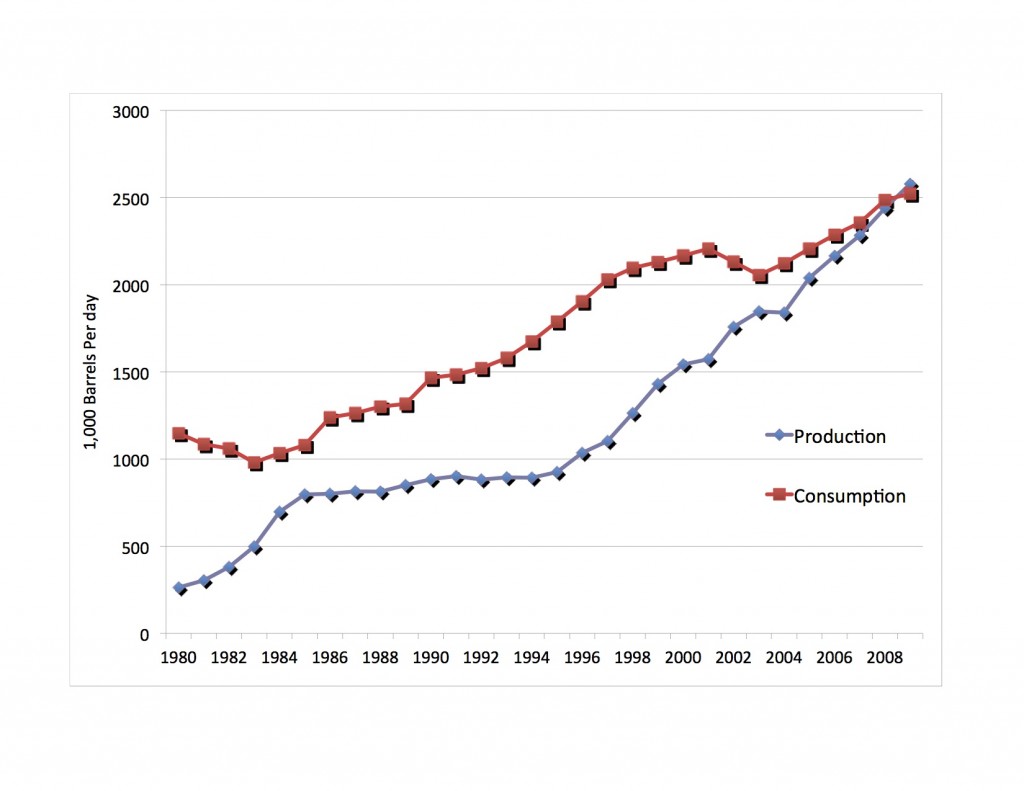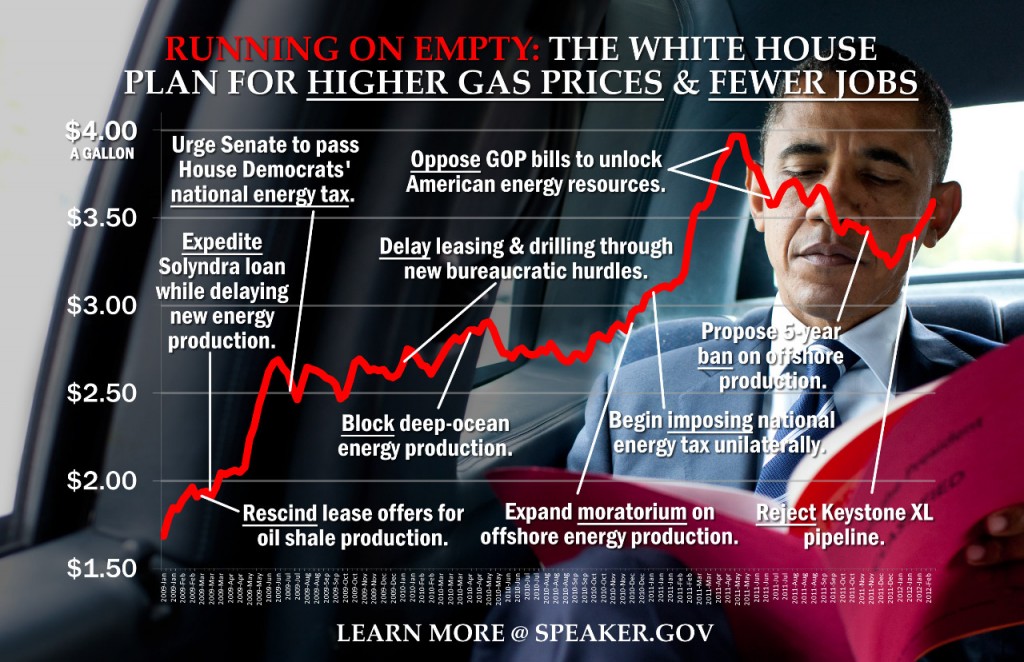There are a few items of interest as President Obama continues to tout his energy “policy.”
First, there’s this:
Brazil’s ethanol program is often touted as having weaned that nation off its dependency on foreign oil. In truth, they made a political decision 40 years ago that they did not wish to be vulnerable to Middle Eastern (and others’) machinations or crises. As a result of that decision, and their subsequent efforts, Brazil, which used to import over three-fourths of its oil, today imports no oil. In fact, it’s a (minor) net exporter. While their ethanol development program has contributed to their overall reduction in dependency on foreign oil, Brazilian oil production and use have both increased sharply: consumption by nearly 120% since 1980, and production even more markedly—875% over the same time frame. Figure 1 tells that tale. 
Figure 1: Brazilian Oil Production and Consumption, 1980 – 2009
What accounts for this? In addition to on-shore production, Brazil actively drills for oil in the Atlantic, off its coast—often far off its coast and in very deep waters. Brazil also actively drills in the Gulf of Mexico—a vast source of off-our-own-coast oil for which President Obama won’t allow American companies to drill—as he won’t allow off our Atlantic or Pacific coasts, or in Alaska, or anywhere oil is under Federally-owned land.
Then there’s this, courtesy of Speaker of the House of Representatives, John Boehner (R, OH). Here is made manifest President Obama’s disdain for domestic oil production and for Americans’ pocketbooks.
Don Seymour writes [emphasis and link in the original]:
President Obama called for the kind of “all of the above” energy strategy long-championed by Republicans. But far from supporting all of the above,” the Obama administration has spent more than three years blocking efforts to expand energy production and bring down gas prices, while pushing job-crushing tax hikes and taxpayer-backed loans to companies like Solyndra.
Figure 2 pretty much says it all.
 Figure 2: Running on Empty: The White House Plan for Higher Gas Prices & Fewer Jobs
Figure 2: Running on Empty: The White House Plan for Higher Gas Prices & Fewer Jobs
Finally, there’s enormous technological improvement supporting vast increases in natural gas production, which the Obama administration would just as soon see disappear. Fracking technology has exploded our accessible domestic stores of gas. In the Marcellus gas deposit, alone, which lies thousands of feet down in a reservoir reaching from West Virginia to New York, is enough gas to satisfy our nation’s energy needs for the next 15 years.
Fracking (hydraulic fracturing) is the technology that’s making this heretofore unreachable gas eminently reachable. Fracking works by drilling a 5″ diameter hole (yes, it’s that small) from a more or less convenient location on the surface down several thousand feet until the drill reaches the gas-containing shale or the depth at which the shale exists, then bending to horizontal and drilling farther, now into the shale, until the pipes and rig are well into in the part of the shale containing the gas. This is where that “more-or-less convenient” part comes in: the drill doesn’t have to be vertical, or at an angle off vertical to get to the targeted location. This allows the surface location of the drilling to be offset quite a ways, for instance out of town, or well away from the farmer’s house. After arrival in the targeted gas area, a high-pressure burst of water and sand is pumped into the piping, which creates millimeter-wide fractures in the shale through which the natural gas can escape into the piping.
Notice that: it’s water that does the fracturing. The sand is along to be driven by that same pressure burst into the cracks created by the water to hold them open. There are some impurities add to the mix: biocides akin to what gets dumped into backyard swimming pools for keeping bacteria, algae (even at that depth), and so on from clogging the pipes (they’re only 5″ across). Other impurities include lubricants to keep the sand from abrading, too much, the pipes on the way into place. And to facilitate withdrawing the water so the gas can flow more easily. There are impurities added by the depths through which the drilling occurred, also, as the drilling equipment and water are withdrawn so the gas can be collected: for instance, the drilling often goes through geologically ancient underground seas, or seabeds, so the equipment coming back up is coated with the salts of those ancient seas. The withdrawn water then is treated by the frackers, or by water treatment specialist companies hired by the frackers, to greater purity than the typical city water treatment plant before it’s released back into the environment.
But Obama’s administration keeps trying to butt in—both to “standardize” regulations concerning fracking, and to use that “standardization” to interfere with fracking itself. It’s only necessary to review his EPA regulations concerning coal use, ethanol for our cars, his “green” energy projects. He’s moving to block the use of coal altogether; he mandates, or continues to mandate during his “review” of excess regulation, the use of ethanol in our gasoline without regard to what that does to an automobile’s engine or what ethanol production does to the price of food. And he has accelerated the diversion of our tax money into his favored “green” companies. Competition, even from clean natural gas, cannot be accepted.
And never mind that state regulators see no need for Federal involvement. This isn’t a turf battle; they make their argument on logic and facts. Pennsylvania regulators, for instance, understand the practices and geology of Pennsylvania much more thoroughly and clearly than can Federal regulators at the remote EPA. At best, any reasonable Federal regulatory system would end up essentially replicating what many of the states already do, but at a political and physical distance that makes those Federal regulators more remote, and they’re less accountable. Further, that remoteness renders even well-intentioned Federal regulators unable to tailor their regulations to the varied specific state environments—political, economic, or natural—the way the individual states can,
